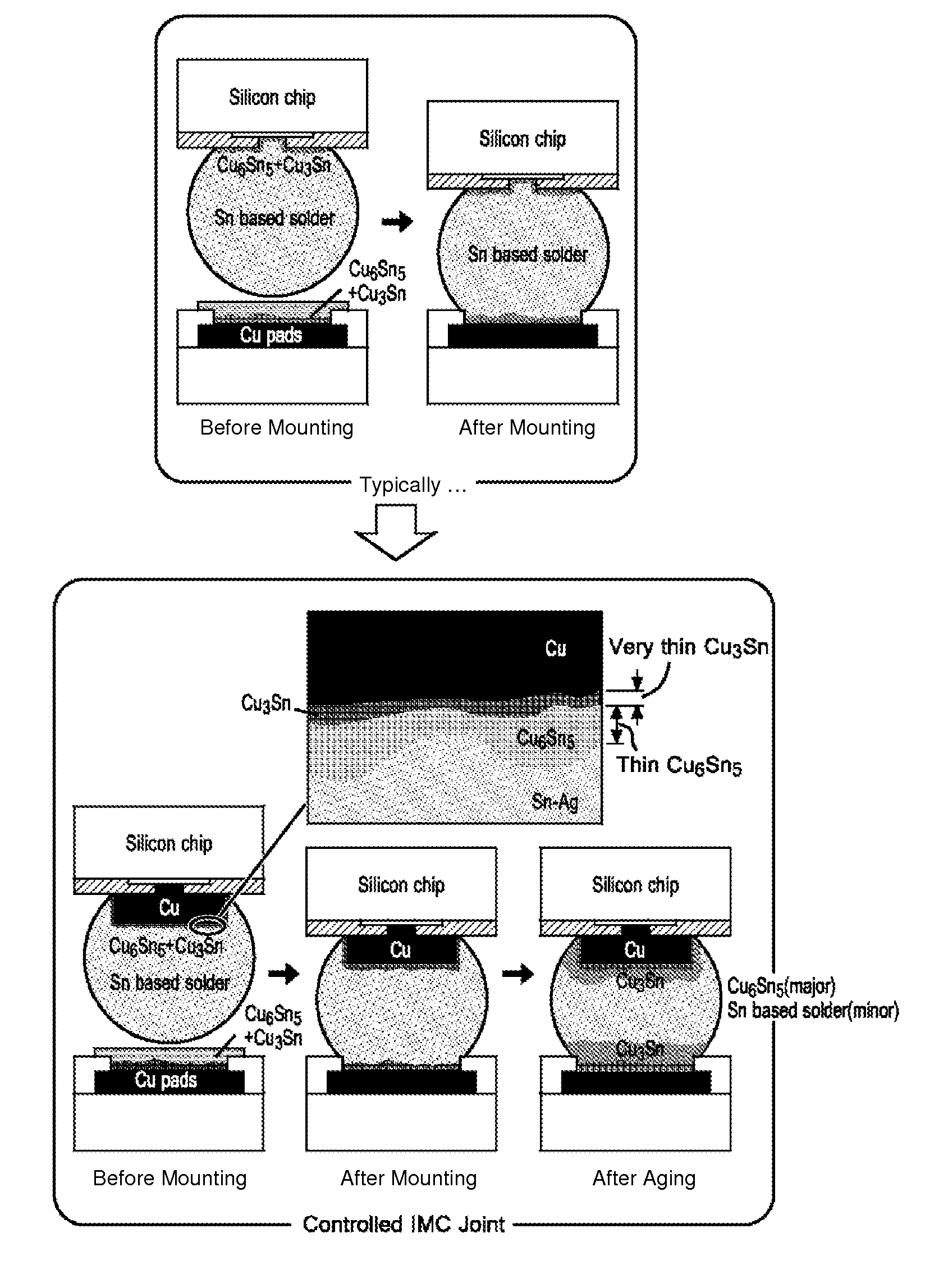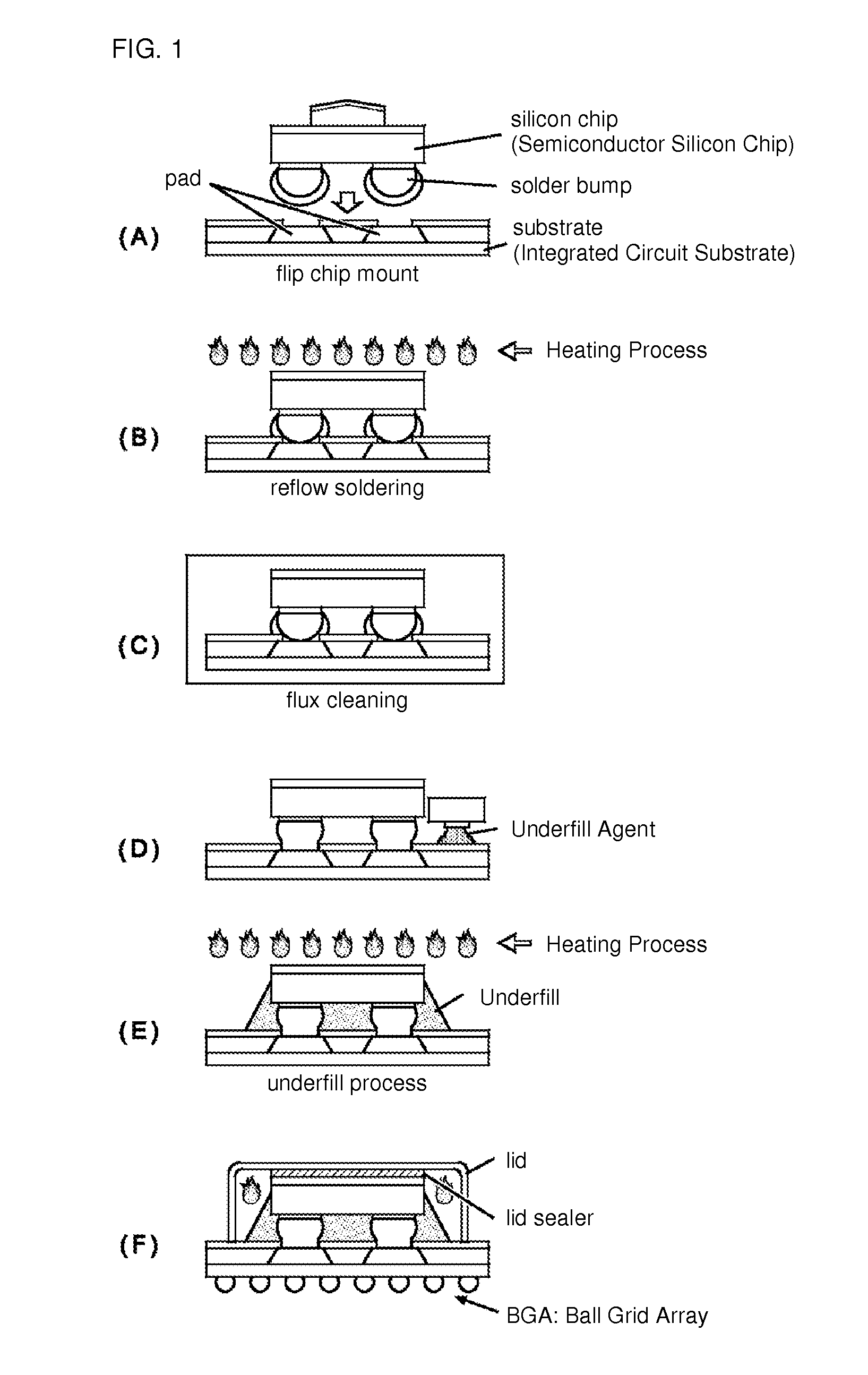Interfacial alloy layer for improving electromigration (EM) resistance in solder joints
a technology of interfacial alloy and solder joints, which is applied in the direction of welding/cutting media/materials, manufacturing tools, and soldering apparatus, etc., can solve the problems of increasing electromigration (em) resistance, device completely inoperable, and portion of the circuit becoming disconnected, etc., to achieve the effect of improving electromigration (em) resistance in solder joints
- Summary
- Abstract
- Description
- Claims
- Application Information
AI Technical Summary
Benefits of technology
Problems solved by technology
Method used
Image
Examples
Embodiment Construction
[0040]FIG. 1 is a diagram used to explain the configuration of a typical semiconductor package, and a method for manufacturing this package.
[0041]In the manufacture of a semiconductor package with multiple terminals, flip chips, including the C4 method, have gradually been adopted as the mounting method in place of conventional wire bonding.
[0042]The C4 method is an abbreviation for the controlled collapse chip connection method. Here, the expression C4 is derived from the first letter “C” in each of the four words.
[0043]Hump-shaped conductive protrusions called bumps are formed on the electrodes of a wafer for bonding to a substrate.
[0044]The use of this method makes a reduced mounting area and a smaller product possible. Because the wiring in the semiconductor is also shorter, the electrical characteristics are improved.
[0045]First, as shown in FIG. 1 (A), hump-shaped conductive protrusions called solder bumps are formed on a silicon chip (semiconductor silicon chip).
[0046]A solde...
PUM
| Property | Measurement | Unit |
|---|---|---|
| thickness | aaaaa | aaaaa |
| temperature | aaaaa | aaaaa |
| diameter | aaaaa | aaaaa |
Abstract
Description
Claims
Application Information
 Login to View More
Login to View More - R&D
- Intellectual Property
- Life Sciences
- Materials
- Tech Scout
- Unparalleled Data Quality
- Higher Quality Content
- 60% Fewer Hallucinations
Browse by: Latest US Patents, China's latest patents, Technical Efficacy Thesaurus, Application Domain, Technology Topic, Popular Technical Reports.
© 2025 PatSnap. All rights reserved.Legal|Privacy policy|Modern Slavery Act Transparency Statement|Sitemap|About US| Contact US: help@patsnap.com



